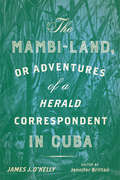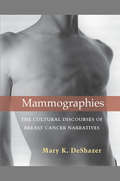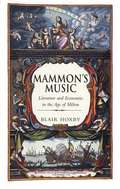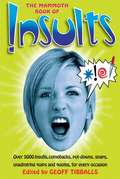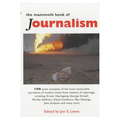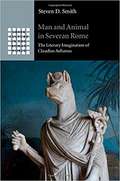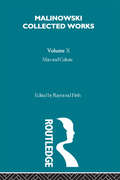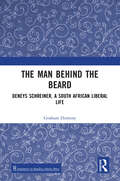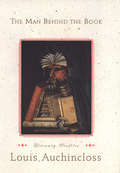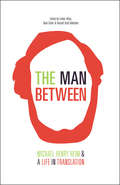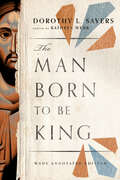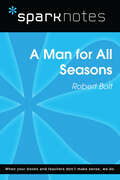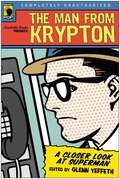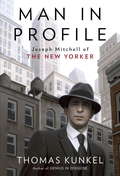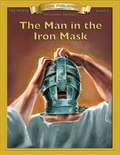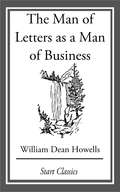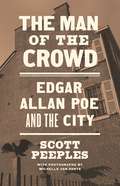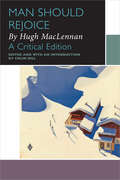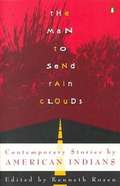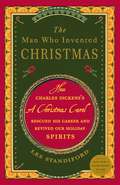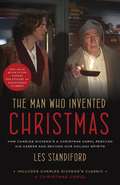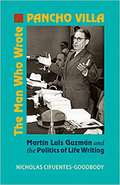- Table View
- List View
The Mambi-Land, or Adventures of a Herald Correspondent in Cuba: A Critical Edition (New World Studies)
by James J. O'KellyIn late 1872, the New York Herald named James J. O’Kelly its special correspondent to Cuba, to cover what would later be known as the Ten Years’ War. O’Kelly was tasked with crossing Spanish lines, locating the insurgent camps, and interviewing the president of the Cuban republic, Carlos Manuel de Céspedes. O’Kelly became a political lightning rod when, after fulfilling his mission, he was arrested, court-martialed, and threatened with execution in Spanish Cuba. For the book that followed, The Mambi-Land, or Adventures of a Herald Correspondent in Cuba, O’Kelly assembled edited versions of the eighteen dispatches he sent to the Herald, some written in the remotest imaginable places in the Cuban interior.The Mambi-Land constitutes the first book-length account of Cuba’s Ten Years’ War for independence from Spain (1868–1878) and provides a window on an understudied moment in U.S.-Cuba relations. More than recovering an important lost work, this critical edition draws attention to Cuba’s crucial place in American national consciousness in the post–Civil War period and represents a timely and significant contribution to our understanding of the complicated history of Cuba-U.S. relations.
Mammographies: The Cultural Discourses of Breast Cancer Narratives
by Mary K. DeshazerWhile breast cancer continues to affect the lives of millions, contemporary writers and artists have responded to the ravages of the disease in creative expression. Mary K. DeShazer's book looks specifically at breast cancer memoirs and photographic narratives, a category she refers to as mammographies, signifying both the imaging technology by which most Western women discover they have this disease and the documentary imperatives that drive their written and visual accounts of it. Mammographies argues that breast cancer narratives of the past ten years differ from their predecessors in their bold address of previously neglected topics such as the link between cancer and environmental carcinogens, the ethics and efficacy of genetic testing and prophylactic mastectomy, and the shifting politics of prosthesis and reconstruction. Mammographies is distinctive among studies of contemporary illness narratives in its exclusive focus on breast cancer, its analysis of both memoirs and photographic texts, its attention to hybrid and collaborative narratives, and its emphasis on ecological, genetic, transnational, queer, and anti-pink discourses. DeShazer's methodology--best characterized as literary critical, feminist, and interdisciplinary--includes detailed interpretation of the narrative strategies, thematic contours, and visual imagery of a wide range of contemporary breast cancer memoirs and photographic anthologies. The author explores the ways in which the narratives constitute a distinctive testimonial and memorial tradition, a claim supported by close readings and theoretical analysis that demonstrates how these narratives question hegemonic cultural discourses, empower reader-viewers as empathic witnesses, and provide communal sites for mourning, resisting, and remembering.
Mammon's Music: Literature and Economics in the Age of Milton
by Blair HoxbyThis book explores what the commercial revolution of the seventeenth century meant to the greatest poet of the era, John Milton, and the broader literary tradition in which he worked. New economic ideas influenced a wide range of Milton's most famous writings as he and other authors engaged with the economic discourse of the age, reimagining ideas about self, community, and empire.
The Mammoth Book of Insults (Mammoth Books #456)
by Geoff TibballsNever be stuck for a wicked line again! - the ultimate collection of insultsHere is the biggest and best ever collection of insults and sharp retorts for when you just wish you could have thought of something faster. Editor Geoff Tibballs presents more than 5,000 come-backs, put-downs, snaps, insults, unadmiring quips and quotes, for every occasion. From the most elegant of studied insults to the wickedest of putdowns, from the language of the street to the literary, political, and entertainment worlds, from playground insults to sports, family and marriage jibes - here is every possible barb you could ever need, guaranteed to crack up all those around you. As an outsider, what do you think of the human race? Your mother's so fat, she has her own area code. Are your parents siblings? Anyone who told you to be yourself couldn't have given you worse advice. Is there no beginning to your talents? You'd be out of your depth in a puddle. Don't you need a licence to be that ugly? I'd like to see things from your point of view but I can't get my head that far up my arse. I'd love to go out with you but I have to worm my dog.
The Mammoth Book of Journalism
by Jon E. LewisThe newspaper has recorded and influenced modern history like nothing else on earth. From The Washington Post's exposure of Watergate, Tom Wolfe's 1960's social documentary in The Electric Cool-Aid Acid Test to Robert Fisk uncovering the slaugher at Chatila, all the articles included here are reportage from the frontline of life. The 100 dispatches collected here are reports which have caught most vividly the greatest events of the twentieth century, the editorials which have changed our thinking, the criticisms which have penetrated most deeply into contemporary culture. Most of all, they offer a snapshot of these modern times.
The Mammoth Book of Journalism (Mammoth Books #380)
by Jon E. LewisThe newspaper has recorded and influenced modern history like nothing else on earth. From The Washington Post's exposure of Watergate, Tom Wolfe's 1960's social documentary in The Electric Cool-Aid Acid Test to Robert Fisk uncovering the slaugher at Chatila, all the articles included here are reportage from the frontline of life. These are the editorials that have changed our thinking and the criticisms that have penetrated most deeply into contemporary culture. Most of all, they offer a snapshot of these modern times.
Man and Animal in Severan Rome
by Steven D. SmithThe Roman sophist Claudius Aelianus, born in Praeneste in the late second century CE, spent his career cultivating a Greek literary persona. Aelian was a highly regarded writer during his own lifetime, and his literary compilations would be influential for a thousand years and more in the Roman world. This book argues that the De natura animalium, a miscellaneous treasury of animal lore and Aelian's greatest work, is a sophisticated literary critique of Severan Rome. Aelian's fascination with animals reflects the cultural issues of his day: philosophy, religion, the exoticism of Egypt and India, sex, gender, and imperial politics. This study also considers how Aelian's interests in the De natura animalium are echoed in his other works, the Rustic Letters and the Varia Historia. Himself a prominent figure of mainstream Roman Hellenism, Aelian refined his literary aesthetic to produce a reading of nature that is both moral and provocative.
Man and Culture: An Evaluation of the Work of Malinowski [1957]
by Bronislaw MalinowskiThis volume is a reassessment of Malinowski's work by a group of his former pupils and colleagues. A frank evaluation, not a eulogy, it examines the real and lasting importance of Malinowski's contribution to a range of subjects.
The Man behind the Beard: Deneys Schreiner, a South African Liberal Life
by Graham DominyDeneys Schreiner was an academic, a scientist and a man of strong liberal principles, with a good sense of humor and widespread interests in the sciences, arts and public affairs. In his steady way, he transformed the University of Natal and the community around it. Between the 1960s and 1980s, Schreiner supported and initiated several endeavors to promote constitutional futures other than those imposed by the apartheid government. One of the most significant was the Buthelezi Commission, which he chaired. This biography sets out the context of the times in which Schreiner lived and his life from his ancestors to his tenure as Vice-Principal. This book is created with extensive archival research, supported by interviews with family members, former colleagues, friends, and journalists. Schreiner was a man who made a considerable contribution to the struggle for democracy in South Africa. And then there is the story of his beard, once described as a potent symbol of his presence and implacable integrity. Print edition not for sale in Sub Saharan Africa.
The Man Behind the Book: Literary Profiles
by Louis AuchinclossTwenty-three biographical essays on writers admired by the National Medal of Arts–winning author of The Education of Oscar Fairfax.For Louis Auchincloss, life and letters are not two things but one. It therefore comes as no surprise that when he writes about writers, their lives are considered as closely as their works. He takes what today is a refreshingly unpopular position: that the artist and his art cannot be teased apart, that biography of criticism and criticism biography. For Mr. Auchincloss, it all boils down to that maxim of Buffon’s: “the style’s the man,” the man behind the book.The twenty-three writers discussed here are a mixed lot—English, American, and French; novelists, poets, and playwrights; Jacobeans, Victorians, and moderns—yet each has meant a great deal to Mr. Auchincloss as a reader and a writer. Some of them are classics, and familiar Auchincloss subjects: Sarah Orne Jewett, Henry James, Ivy Compton-Burnett. Others, among them Prosper Merimee, Harold Frederic, and Amy Lowell, were famous once but are now obscure. In their cases it is Mr. Auchincloss’s self-described task “to explore the reasons for their fall from grace,” reasons that prove to be unfailingly personal as well as artistic. But as Mr. Auchincloss would rather praise and share than damn and dismiss, it is also his task “to seek the portions of their work that may still merit attention.”Alfred Kazin once noted that Mr. Auchincloss’s essays are marked by “perfect literary grace and wit.” These qualities have never been so evident as in this volume, an informal study of some of the author's favorite books and the fascinating artists behind them.
The Man Between
by Michael Henry Heim Sean Cotter Esther Allen Russell Scott ValentinoWhen Michael Henry Heim--one of the most respected translators of his generation--passed away in the fall of 2012, he left behind an astounding legacy. Over his career, he translated two-dozen works from eight different languages, including books by Milan Kundera, Dubravka Ugresic, Hugo Claus, and Anton Chekov.But Mike, as he was known to his legion of friends, was much more than that. His classes at UCLA on translation inspired a new generation of translators, and his work altering the way translation is viewed in the university will impact the livelihood of translators for decades to come.If that weren't enough, upon his death it was revealed that Heim was the anonymous donor responsible for the PEN Translation Fund--the largest fund in America supporting up-and-coming translators.Hundreds of people in the literary community were impacted by Heim's life and actions, and this book is a small way of honoring this quiet, humble man who, among many other things, is responsible for the title The Unbearable Lightness of Being (and all its variants) entering the English idiom.Comprising a number of different sections--a short autobiography, pieces from authors he worked with, worksheets detailing his teaching and translation techniques--The Man Between opens a window onto the life and teachings of Michael Henry Heim, and, similar to David Bellos's Is That a Fish in Your Ear?, will be of great interest to anyone interested in language, international culture, and the art of translation.
The Man Born to Be King: Wade Annotated Edition
by Dorothy L. SayersFrom December 1941 until October 1942, the BBC broadcast a series of radio dramas written by Dorothy L. Sayers.Noted for their use of colloquial English as part of Sayers's effort to bring the Gospels to life in a new way for listeners, the plays were both controversial and incredibly successful, bolstering the morale of the country during the war. They were subsequently published in 1943, and they stand among Sayers's most beloved works to this day.In this new critical and annotated edition, scholar Kathryn Wehr brings fresh insights to the plays, their background, Sayers's creative process, and the ongoing significance of the life of Christ today. Listen again, or for the first time, to the story of the man who was born to be—and still is—king.
A Man for All Seasons (SparkNotes Literature Guide Series)
by SparkNotesA Man for All Seasons (SparkNotes Literature Guide) by Robert Bolt Making the reading experience fun! Created by Harvard students for students everywhere, SparkNotes is a new breed of study guide: smarter, better, faster. Geared to what today's students need to know, SparkNotes provides: *Chapter-by-chapter analysis *Explanations of key themes, motifs, and symbols *A review quiz and essay topicsLively and accessible, these guides are perfect for late-night studying and writing papers
The Man from Krypton: A Closer Look at Superman
by Glenn YeffethLeading writers discuss, debate, and celebrate the legend of Superman in this anthology, contending that his legend is a truly American myth. Superman was an immigrant with little more than the clothes on his back and raised by simple farmers, absorbing their humble values. He always chose to do the right thing, fighting for truth, justice, and the American way, and represents America at its best. The in-depth analyses of the comics, films and cartoons are at turns funny, philosophical, insightful, and personal, exploring every aspect of the Superman legend.
Man in Profile
by Thomas KunkelThis fascinating biography reveals the untold story of the legendary New Yorker profile writer--author of Joe Gould's Secret and Up in the Old Hotel--and unravels the mystery behind one of literary history's greatest disappearing acts. Born and raised in North Carolina, Joseph Mitchell was Southern to the core. But from the 1930s to the 1960s, he was the voice of New York City. Readers of The New Yorker cherished his intimate sketches of the people who made the city tick--from Mohawk steelworkers to Staten Island oystermen, from homeless intellectual Joe Gould to Old John McSorley, founder of the city's most famous saloon. Mitchell's literary sensibility combined with a journalistic eye for detail produced a writing style that would inspire New Journalism luminaries such as Gay Talese, Tom Wolfe, and Joan Didion. Then, all of a sudden, his stories stopped appearing. For thirty years, Mitchell showed up for work at The New Yorker, but he produced . . . nothing. Did he have something new and exciting in store? Was he working on a major project? Or was he bedeviled by an epic case of writer's block? The first full-length biography of Joseph Mitchell, based on the thousands of archival pages he left behind and dozens of interviews, Man in Profile pieces together the life of this beloved and enigmatic literary legend and answers the question that has plagued readers and critics for decades: What was Joe Mitchell doing all those years? By the time of his death in 1996, Mitchell was less well known for his elegant writing than for his J. D. Salinger-like retreat from the public eye. For thirty years, Mitchell had wandered the streets of New York, chronicling the lives of everyday people and publishing them in the most prestigious publication in town. But by the 1970s, crime, homelessness, and a crumbling infrastructure had transformed the city Mitchell understood so well and spoke for so articulately. He could barely recognize it. As he said to a friend late in life, "I'm living in a state of confusion." Fifty years after his last story appeared, and almost two decades after his death, Joseph Mitchell still has legions of fans, and his story--especially the mystery of his "disappearance"--continues to fascinate. With a colorful cast of characters that includes Harold Ross, A. J. Liebling, Tina Brown, James Thurber, and William Shawn, Man in Profile goes a long way to solving that mystery--and bringing this lion of American journalism out of the shadows that once threatened to swallow him. Praise for Man in Profile "[An] authoritative new biography [about] our greatest literary journalist . . . Kunkel is the ideal biographer of Joseph Mitchell: As . . . one of the great authorities on the ethos of both the magazine (a world all its own, to be sure) and New York newspapers in their picaresque heyday. Better still, he's a writer and craftsman worthy of his subject."--Blake Bailey, The New York Times Book Review (Editor's Choice) "A richly persuasive portrait of a man who cared about everybody and everything."--London Review of Books"Mitchell's life and achievements are brought vividly alive in [this] splendid book."--Chicago Tribune"A thoughtful and sympathetic new biography."--Ruth Franklin, The Atlantic "Excellent . . . A first-rate Mitchell biography was very much in order."--The Wall Street JournalFrom the Hardcover edition.
The Man in the Iron Mask
by Alexandre Dumas Robin M. AionaBring the Classics To Life. These novels have been adapted into 10 short chapters that will excite the reluctant reader as well as the enthusiastic one. Key words are defined and used in context. Multiple-choice questions require the student to recall specific details, sequence the events, draw inferences from story context, develop another name for the chapter, and choose the main idea.
The Man of Letters as a Man of Busine
by William Dean HowellsHe can say that, as the thing is, unless he sells his art he cannot live, that society will leave him to starve if he does not hit its fancy in a picture, or a poem, or a statue; and all this is bitterly true. He is, and he must be, only too glad if there is a market for his wares.
The Man of the Crowd: Edgar Allan Poe and the City
by Scott PeeplesHow four American cities shaped Poe's life and writingsEdgar Allan Poe (1809–1849) changed residences about once a year throughout his life. Driven by a desire for literary success and the pressures of supporting his family, Poe sought work in American magazines, living in the cities that produced them. Scott Peeples chronicles Poe's rootless life in the cities, neighborhoods, and rooms where he lived and worked, exploring how each new place left its enduring mark on the writer and his craft.Poe wrote short stories, poems, journalism, and editorials with urban readers in mind. He witnessed urban slavery up close, living and working within a few blocks of slave jails and auction houses in Richmond and among enslaved workers in Baltimore. In Philadelphia, he saw an expanding city struggling to contain its own violent propensities. At a time when suburbs were just beginning to offer an alternative to crowded city dwellings, he tried living cheaply on the then-rural Upper West Side of Manhattan, and later in what is now the Bronx. Poe's urban mysteries and claustrophobic tales of troubled minds and abused bodies reflect his experiences living among the soldiers, slaves, and immigrants of the American city.Featuring evocative photographs by Michelle Van Parys, The Man of the Crowd challenges the popular conception of Poe as an isolated artist living in a world of his own imagination, detached from his physical surroundings. The Poe who emerges here is a man whose outlook and career were shaped by the cities where he lived, longing for a stable home.
Man Should Rejoice, by Hugh MacLennan: A Critical Edition (Canadian Literature Collection)
by Hugh MacLennanMan Should Rejoice is one of two hitherto unpublished novels by acclaimed novelist Hugh MacLennan. Completed in 1937 and left unpublished due to economic conditions during the Great Depression, it lay in the McGill archives until now. This critical edition of Man Should Rejoice , which is also the first-ever publication of the work, is comprised of a critical introduction, a bibliography of published and unpublished sources, a fully-edited text based on a typescript of the novel, a list of textual emendations, and explanatory notes. The introduction draws upon extensive research undertaken in three Canadian archival collections located in Montreal and Calgary. It provides relevant historical, cultural, and biographical context for the novel. From hundreds of archival documents, Colin Hill reconstructs a textual history of the novel’s production that acknowledges the crucial contribution of Dorothy Duncan, who heavily revised the text and assisted MacLennan behind the scenes. Hill also explores the critical reception of MacLennan’s fiction from the 1930s to the present. This book is published in English. - Man Should Rejoice est un des deux romans inédits du grand romancier Hugh MacLennan. Terminé en 1937, il fut victime de la Grande Crise et fut conservé dans les archives de McGill jusqu’à maintenant. Cette édition critique de Man Should Rejoice comprend une introduction critique, une bibliographie des sources publiées et non publiées, le texte révisé tiré d’un tapuscrit du roman, une liste des emendations textuelles, et des notes explicatives. L’introduction, qui repose sur des recherches archivistiques poussées de trois collections canadiennes situées à Montréal et à Calgary, fournit le contexte historique, culturel et biographique du roman. Colin Hill érige l’histoire textuelle de l’écriture de ce roman à partir de centaines de documents d’archives qui jettent la lumière sur la contribution clé de Dorothy Duncan, qui a révisé en profondeur le texte et a aidé MacLennan en coulisses. Il explore par ailleurs la réception critique de la fiction de MacLennan, des années 1930 jusqu’à aujourd’hui. Ce livre est publié en anglais.
The Man to Send Rain Clouds: Contemporary Stories by American Indians
by Kenneth RosenThe stories in this collection--now updated with a new introduction--reflect the modern experience of white-educated Indians, bitterly aware that their culture is threatened with destruction, trying to bear witness through a non-Indian genre: the short story.
The Man Who Invented Christmas: How Charles Dickens's A Christmas Carol Rescued His Career and Revived Our Holiday Spirits
by Les StandifordAs uplifting as the tale of Scrooge itself, this is the story of how one writer and one book revived the signal holiday of the Western world.Just before Christmas in 1843, a debt-ridden and dispirited Charles Dickens wrote a small book he hoped would keep his creditors at bay. His publisher turned it down, so Dickens used what little money he had to put out A Christmas Carol himself. He worried it might be the end of his career as a novelist.The book immediately caused a sensation. And it breathed new life into a holiday that had fallen into disfavor, undermined by lingering Puritanism and the cold modernity of the Industrial Revolution. It was a harsh and dreary age, in desperate need of spiritual renewal, ready to embrace a book that ended with blessings for one and all.With warmth, wit, and an infusion of Christmas cheer, Les Standiford whisks us back to Victorian England, its most beloved storyteller, and the birth of the Christmas we know best. The Man Who Invented Christmas is a rich and satisfying read for Scrooges and sentimentalists alike.From the Hardcover edition.
The Man Who Invented Christmas (Movie Tie-In): How Charles Dickens's A Christmas Carol Rescued His Career and Revived Our Holiday Spirits
by Les StandifordAs uplifting as the tale of Scrooge itself, this is the story of how Charles Dickens revived the signal holiday of the Western world. Soon to be a major motion picture. Just before Christmas in 1843, a debt-ridden and dispirited Charles Dickens wrote a small book he hoped would keep his creditors at bay. His publisher turned it down, so Dickens used what little money he had to put out A Christmas Carol himself. He worried it might be the end of his career as a novelist. The book immediately caused a sensation. And it breathed new life into a holiday that had fallen into disfavor, undermined by lingering Puritanism and the cold modernity of the Industrial Revolution. It was a harsh and dreary age, in desperate need of spiritual renewal, ready to embrace a book that ended with blessings for one and all. With warmth, wit, and an infusion of Christmas cheer, Les Standiford whisks us back to Victorian England, its most beloved storyteller, and the birth of the Christmas we know best. The Man Who Invented Christmas is a rich and satisfying read for Scrooges and sentimentalists alike.
The Man Who Loved Books Too Much: The True Story of a Thief, a Detective, and a World of Literary Obsession
by Allison Hoover BartlettThis is the story of John Gilkey, a man who repeatedly stole rare books, and the journalist who tells of, and gets caught up in, his exploits.
The Man Who Wrote Pancho Villa: Martin Luis Guzman and the Politics of Life Writing
by Nicholas Cifuentes-GoodbodyMartin Luis Guzman was many things throughout his career in twentieth-century Mexico: a soldier in Pancho Villa's revolutionary army, a journalist-in-exile, one of the most esteemed novelists and scholars of the revolutionary era, and an elder statesman and politician. In The Man Who Wrote Pancho Villa, we see the famous author as he really was: a careful craftsman of his own image and legacy. His five-volume biography of Villa propelled him to the heights of Mexican cultural life, and thus began his true life's work. Nicholas Cifuentes-Goodbody shapes this study of Guzman through the lens of "life writing" and uncovers a tireless effort by Guzman to shape his public image.The Man Who Wrote Pancho Villa places Guzman's work in a biographical context, shedding light on the immediate motivations behind his writing in a given moment and the subsequent ways in which he rewrote or repackaged the material. Despite his efforts to establish a definitive reading of his life and literature, Guzman was unable to control that interpretation as audiences became less tolerant of the glaring omissions in his self-portrait.
The Man Who Wrote Pancho Villa: Martin Luis Guzman and the Politics of Life Writing
by Nicholas Cifuentes-GoodbodyMartin Luis Guzman was many things throughout his career in twentieth-century Mexico: a soldier in Pancho Villa's revolutionary army, a journalist-in-exile, one of the most esteemed novelists and scholars of the revolutionary era, and an elder statesman and politician. In The Man Who Wrote Pancho Villa, we see the famous author as he really was: a careful craftsman of his own image and legacy. His five-volume biography of Villa propelled him to the heights of Mexican cultural life, and thus began his true life's work. Nicholas Cifuentes-Goodbody shapes this study of Guzman through the lens of "life writing" and uncovers a tireless effort by Guzman to shape his public image.The Man Who Wrote Pancho Villa places Guzman's work in a biographical context, shedding light on the immediate motivations behind his writing in a given moment and the subsequent ways in which he rewrote or repackaged the material. Despite his efforts to establish a definitive reading of his life and literature, Guzman was unable to control that interpretation as audiences became less tolerant of the glaring omissions in his self-portrait.
